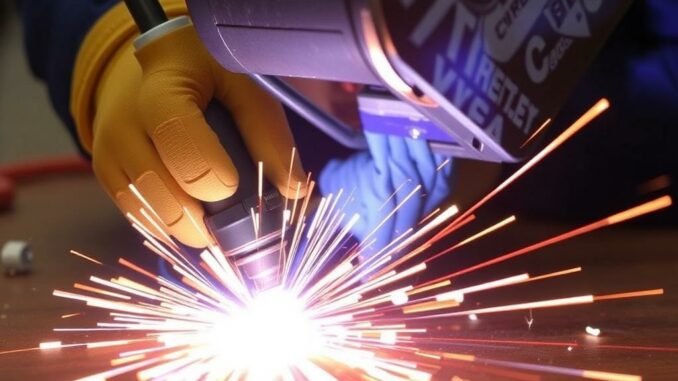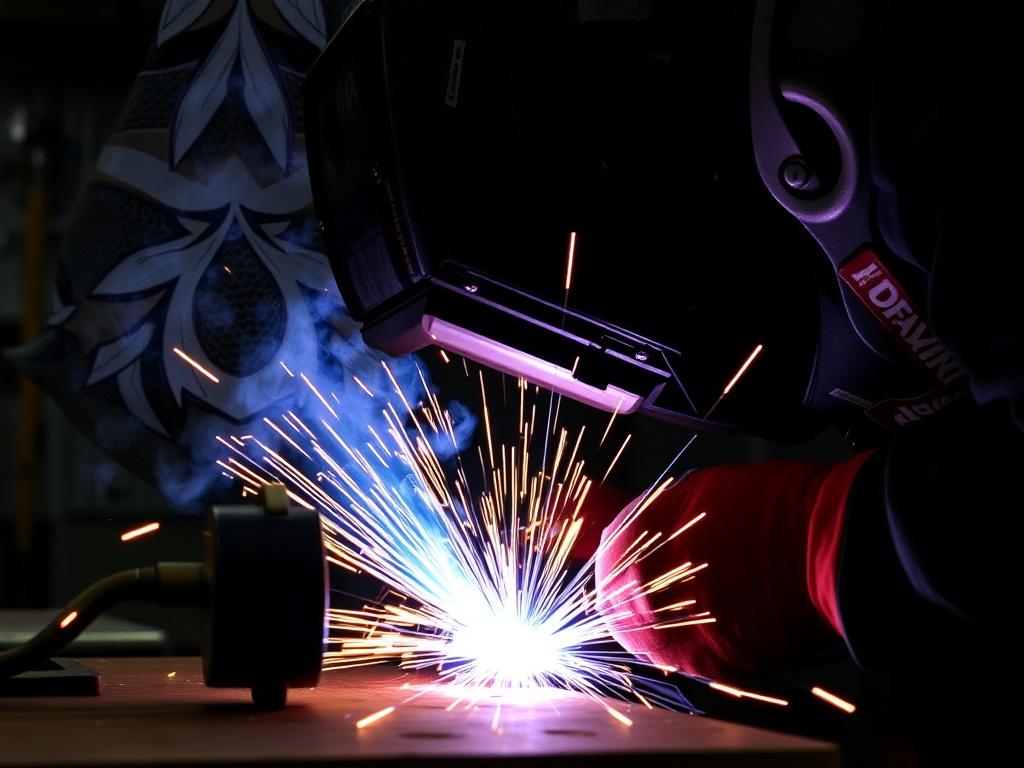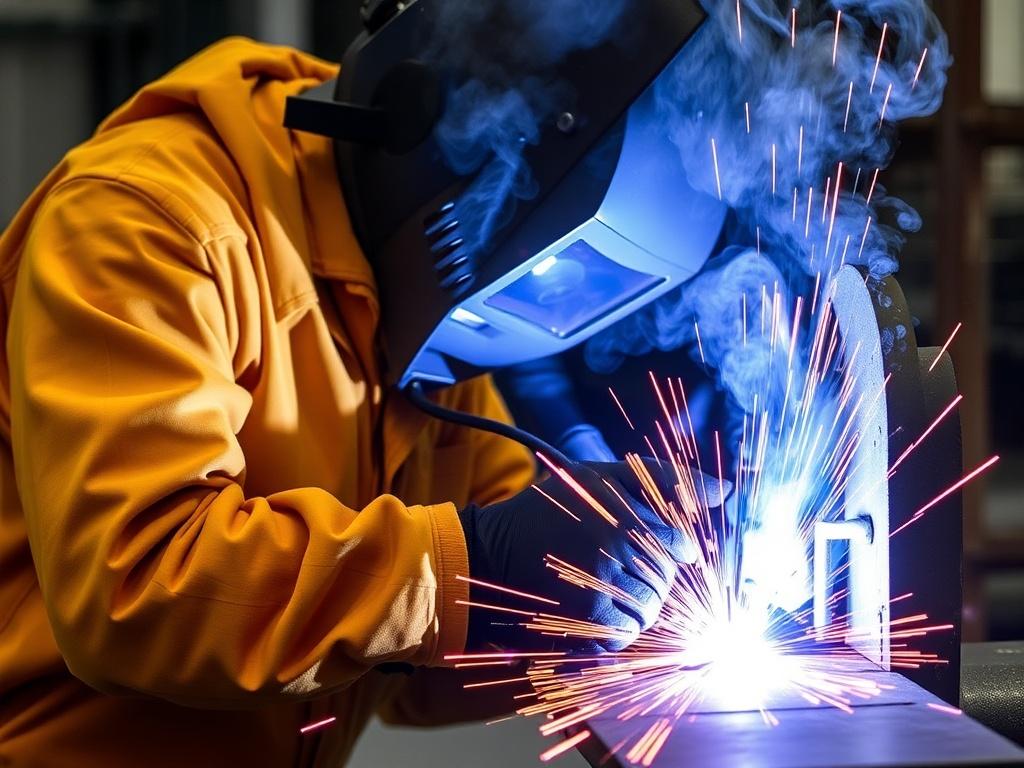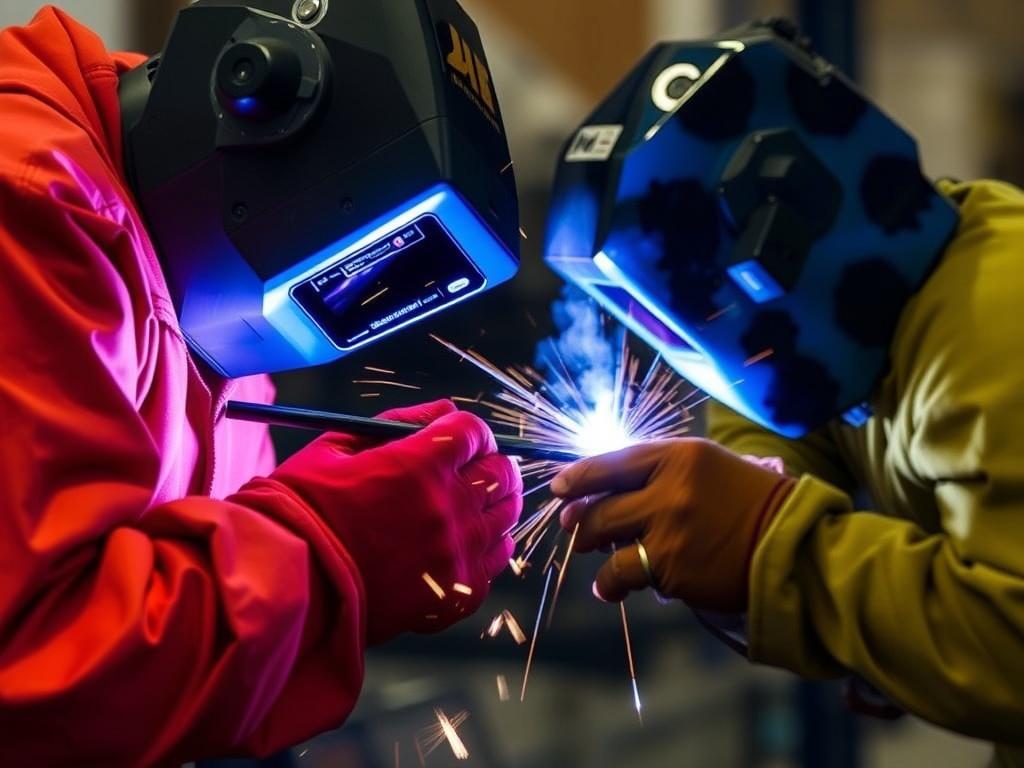
Welding is an ancient craft that has evolved drastically over the years. With the demands of modern industries, the quest for improving efficiency, quality, and strength in welds has never been more pressing. One of the most exciting developments in this field is hybrid welding, a method that combines different welding techniques to bring out the best features of each. By merging technologies, hybrid welding aims to overcome the limitations of individual welding methods and provide superior results for a multitude of applications.
If you are curious about how hybrid welding works, why it is gaining popularity, and how it impacts industries such as automotive, aerospace, shipbuilding, and construction, you’ve come to the right place. This comprehensive article will take you through everything you need to know about hybrid welding — what it is, the techniques involved, the advantages, challenges, and future trends. Let’s dive in and explore this fascinating topic that is shaping the future of manufacturing and engineering.
What is Hybrid Welding?
At its core, hybrid welding is the process of combining two or more welding techniques simultaneously in order to utilize the strengths of each method while minimizing their weaknesses. Unlike traditional welding methods, which rely on a single energy source or technique, hybrid welding merges these sources, enhancing the overall process and outcomes.
For example, a commonly used hybrid welding combination is Gas Metal Arc Welding (GMAW) with laser beam welding. In this setup, the laser provides deep penetration and a focused heat source, while the GMAW adds filler material and fills any gaps or joints. Together, they create an efficient welding process that is faster, more accurate, and stronger than either technique on its own.
Hybrid welding isn’t limited to the laser and arc welding combo; it can involve various methods like plasma arc welding, electron beam welding, or resistance welding mixed with other conventional techniques. The goal is always to tailor the process to meet specific requirements for strength, speed, cost, or material compatibility.
How Hybrid Welding Differs From Conventional Welding
Conventional welding often involves choosing a single technique based on the material, thickness, and application. For instance, shielded metal arc welding (SMAW) might be selected for simplicity and portability, while TIG welding could be used for more delicate, precision work. While these methods are effective, their limitations sometimes restrict the quality or speed achievable.
Hybrid welding stands apart by integrating two energy sources or welding technologies concurrently. This dual approach allows welders to blend the precision of laser welding with the adaptability and filler addition capabilities of arc welding, or to connect different metals that might be difficult to join with a single traditional approach.
By choosing the right combination, hybrid welding addresses common challenges such as distortion, residual stresses, insufficient penetration, and speed limitations. Consequently, this approach can greatly improve productivity and product quality.
Common Techniques Used in Hybrid Welding

Hybrid welding encompasses various combinations, but some techniques are especially prevalent due to their complementary nature and industrial applicability. Let’s break down the most common pairings:
Laser and Arc Welding Hybrid
This is one of the most widely used hybrid techniques. Laser welding offers a narrow, intense heat source that produces deep penetration with minimal distortion. Meanwhile, arc welding (such as GMAW or TIG) provides the filler material and wider pool control.
The synergy of the two is powerful. The laser beam rapidly melts the base metal, while the arc adds the necessary filler to bridge gaps and accommodate joint tolerances. This combination results in high speed, low distortion, and excellent weld quality in a variety of materials, including steels, aluminum, and titanium.
Electron Beam and Arc Welding Hybrid
Electron beam welding excels in creating deep, narrow welds in vacuum conditions, often used in aerospace and nuclear applications. Combining it with arc welding can help in filling gaps and addressing issues encountered when joining complex assemblies or thicker materials. This type of hybrid welding can be more complex and is usually reserved for specialized industrial applications.
Plasma Arc and Laser Hybrid Welding
Plasma arc welding provides excellent arc stability and can handle thicker materials; combining it with laser welding enhances penetration depth while controlling heat input. This hybrid is especially useful in joining stainless steel and high-temperature alloys where precision and deep welding are essential.
Resistance and Arc Welding Hybrid
In some industrial applications, resistance spot welding is combined with arc welding to boost joint strength and accommodate different material types or thicknesses. This hybrid method is beneficial in mass production environments, such as automotive assembly lines, where repetitive, fast, and strong welds are crucial.
Advantages of Hybrid Welding

So what makes hybrid welding so appealing? Why are so many industries eager to adopt these combined methods? Let’s delve into the advantages that make hybrid welding stand out:
Speed and Productivity
One of the standout benefits of hybrid welding is its potential to increase welding speed significantly. By using a laser or electron beam as the primary heat source and supplementing it with arc welding or another technique, welders can process materials much faster than traditional methods. Faster welds mean shorter production times, lower labor costs, and higher throughput — a vital factor in high-volume fabrication.
Improved Weld Quality and Strength
The precision and focused heat of laser or electron beams, combined with the adaptability of arc welding or filler-based methods, yield welds that are often stronger and more consistent. Hybrid welding can minimize defects such as porosity, cracks, or lack of fusion, making the final joints more reliable and durable.
Reduced Heat Input and Distortion
Excessive heat during welding can cause distortion, warping, and residual stresses. Hybrid welding employs highly concentrated energy sources alongside controlled filler addition, thereby restricting the heat-affected zone. This leads to less deformation, preserving the dimensional accuracy of components — particularly important in precision engineering fields.
Versatility With Different Materials
One of the challenges in welding is joining dissimilar materials, like steel to aluminum, or thin sheets with thicker parts. Hybrid welding techniques can be tailored to address these challenges effectively, for example, by adjusting the arc welding parameters while maintaining laser beam precision, making hybrid welding highly versatile.
Cost Efficiency
Despite the complexity of combining techniques, hybrid welding can be cost-effective in the long run. By improving speed, reducing rework, lowering distortion, and minimizing filler materials, companies can save money on production and achieve better overall value.
Challenges and Considerations in Hybrid Welding
While hybrid welding brings numerous benefits, it’s important to be aware of the challenges that come with combining different techniques. As with any advanced technology, proper planning, skill, and equipment are essential to maximize advantages.
Equipment and Setup Complexity
Hybrid welding requires specialized equipment capable of synchronizing multiple heat sources and feeding systems. For instance, a hybrid laser-GMAW setup needs a laser system, an arc welding power supply, wire feeders, shielding gas, and advanced control panels to coordinate all components. The initial investment can be substantial, and setting up the systems requires expertise.
Process Control and Parameter Optimization
Getting the parameters right is critical in hybrid welding. Variables such as laser power, arc current, wire feed speed, travel speed, shielding gas composition, and torch positioning all influence the weld quality. Achieving optimal harmonization is a continual challenge that demands thorough testing, monitoring, and operator skill.
Material Compatibility and Joint Design
Although hybrid welding improves material compatibility, certain combinations or joint designs may still present difficulties. For example, welding highly reflective materials like copper with lasers requires additional considerations, and joints with significant fit-up gaps may need more filler material or a different hybrid pairing.
Operator Training and Skill Level
Since hybrid welding involves merging two advanced technologies, operators must be well-versed in both methods, understand the equipment’s behavior, and be capable of troubleshooting issues. Proper training is essential to ensure safe, effective, and consistent welds.
Applications of Hybrid Welding Across Industries
Hybrid welding’s ability to improve efficiency and weld quality has made it attractive in several industries where reliability, performance, and cost-efficiency are paramount. Let’s look at some prime examples:
Automotive Industry
In automotive manufacturing, speed and precision are crucial. Hybrid laser-arc welding is widely used for joining body panels, chassis components, and exhaust systems. This technique enables slimmer heat-affected zones, lower distortion, and faster production rates, helping manufacturers meet tight schedules and stringent quality requirements.
Aerospace Sector
The aerospace industry demands joints that can withstand extreme conditions while being lightweight. Hybrid welding, especially combining electron beam or laser welding with arc welding, facilitates the joining of high-strength alloys and complex assemblies used in aircraft and spacecraft structures.
Shipbuilding and Heavy Industry
Massive steel structures required in shipbuilding benefit greatly from hybrid welding’s penetration depth and speed. Laser-arc hybrid welding can weld thick plates with high-quality results, minimizing distortion and reducing the time vessels spend in the dry dock.
Energy and Power Generation
Power plants, wind turbines, and pipelines require durable and reliable welds. Hybrid welding is employed to join thick sections of steel, corrosion-resistant alloys, and other materials under stringent industry standards.
Electronics and Medical Device Manufacturing
In fields requiring extremely precise and low-distortion welds, such as electronics and medical devices, hybrid welding offers unparalleled control and quality, allowing for the joining of microcomponents or delicate instruments with minimal damage to surrounding areas.
Hybrid Welding Process Parameters: A Closer Look

Understanding the key parameters that influence hybrid welding is vital to harness its full potential. Below is a table describing some critical parameters and their typical effects.
| Parameter | Description | Effect on Weld |
|---|---|---|
| Laser Power | The amount of energy supplied by the laser beam. | Higher power increases penetration depth and melt pool size but risks burning or excessive distortion if too high. |
| Arc Current | Electric current in the arc welding portion of the process. | Controls the heat input from the arc, influencing filler deposition and weld bead shape. |
| Wire Feed Speed | Speed at which filler wire is fed into the weld pool. | Affects deposition rate, bead size, and penetration; too fast can cause porosity or spatter. |
| Travel Speed | Speed at which the welding torch moves along the joint. | Controls heat input and weld bead length; slower speeds increase heat input, potentially leading to distortion. |
| Shielding Gas Composition | Mix of gases used to protect the weld pool from oxidation. | Impacts arc stability, penetration, and weld bead appearance. |
| Torch Positioning | Relative alignment of laser and arc welding torches. | Critical for synchronizing the heat inputs and achieving optimal weld bead geometry. |
Future Trends and Innovations in Hybrid Welding
As technology advances, hybrid welding continues to evolve. The integration of automation, robotics, and intelligent controls is transforming how welding operations are performed, enhancing repeatability, precision, and safety. Here are several trends to watch:
Robotic Hybrid Welding Systems
Combining hybrid welding with robotic arms increases accessibility to complex geometries and boosts productivity. Robots can precisely control weld parameters and torch positioning, making hybrid welding suitable for intricate or high-volume manufacturing tasks.
Artificial Intelligence and Machine Learning
Emerging intelligent systems can monitor weld quality in real-time, automatically adjusting parameters to prevent defects. AI-driven hybrid welding setups hold promise for reducing human error and increasing efficiency on factory floors.
New Material Combinations
As new alloys and composite materials emerge, hybrid welding methods are adapting to meet the need for reliable joining techniques, especially in lightweight structures for transportation and renewable energy sectors.
Environmental Impact and Energy Efficiency
Hybrid welding, by virtue of faster welds and lower heat input, tends to consume less energy and reduces waste compared to conventional methods. Ongoing research aims to optimize these benefits further, contributing to greener manufacturing processes.
Summary: Why Hybrid Welding is the Future of Joining
In summary, hybrid welding represents a remarkable leap forward in the joining technology landscape. By intelligently combining different welding methods, it successfully marries the speed, depth, and precision of laser or electron beam welding with the filling and gap-bridging capabilities of arc welding and other traditional processes.
This approach offers a robust solution to many long-standing issues in welding — from distortion and defects to slow production rates and difficult material combinations. Though it demands higher upfront investment and operator expertise, the resulting improvements in weld quality, efficiency, and cost-effectiveness make hybrid welding an increasingly compelling choice for industries worldwide.
Whether you’re an engineer, manufacturer, or welding technician, keeping an eye on hybrid welding’s development will be key to leveraging new capabilities and staying competitive in a rapidly advancing industrial world. By understanding the principles, applications, and challenges outlined here, you can better assess how hybrid welding can fit into your projects or operations, bringing you closer to achieving better results, faster and more reliably.
Further Reading and Resources
- American Welding Society (AWS) — Industry standards, guidelines, and publications on welding technologies.
- The Welding Institute (TWI) — Research center with extensive resources on hybrid welding developments.
- ScienceDirect: Hybrid Welding — Academic articles and case studies on hybrid welding science and applications.
Feel free to dive deeper into these resources to expand your knowledge and keep updated on the latest in hybrid welding technology.
